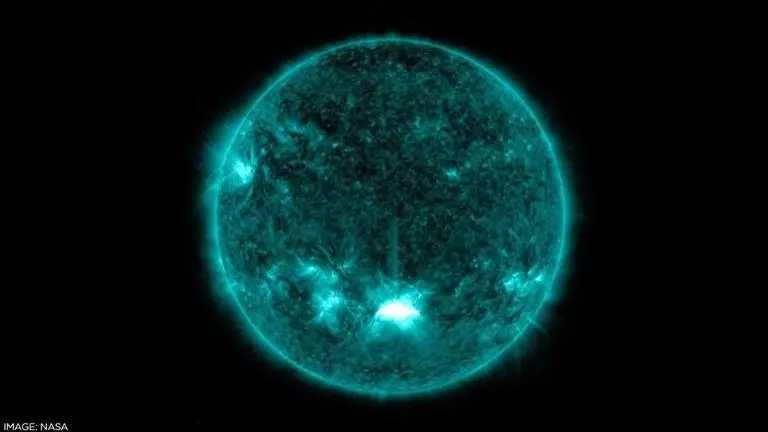Updated 30 October 2021 at 10:02 IST
NASA records powerful 'X1' solar flare peaking on October 28, shares picture
The sun produced a large amount of solar flare on October 28 that peaked around 11:35 am EDT. The incident was recorded on camera and shared by NASA.
- Science News
- 2 min read

The sun produced a large amount of solar flare on October 28 that peaked around 11:35 am EDT. The incident was recorded on camera by the National Aeronautics and Space Administration's (NASA) Solar Dynamics Observatory, which keeps a continual eye on the sun, NASA informed in an official press release. Uploading details, the NASA Sun & Space wrote in a tweet, “POW! The Sun just served up a powerful flare!”
POW! The Sun just served up a powerful flare! ☀️ 💥
— NASA Sun & Space (@NASASun) October 28, 2021
At 11:35 a.m. EDT today, a powerful X1-class solar flare erupted from the Sun. NASA’s Solar Dynamics Observatory caught it all on camera. 📸
More on our Solar Cycle 25 blog: https://t.co/L5yS3hJRTx pic.twitter.com/iTwZZ7tCOY
Solar flares are intense radiation blasts from the sun. Solar flares occur when magnetic field lines around sunspots tangle, intersect, and rearrange, resulting in strong bursts of radiation. These solar flares' dangerous radiations cannot penetrate through the atmosphere of the Earth to cause any negative impact on human beings, but it can disrupt the Earth's atmospheric layer where GPS and telecommunication signals flow if the flares are strong enough.
How are Solar Flares measured?
Depending on their X-ray brightness, solar flares are classified as A, B, C, M, or X. Category A is the least bright flares, while class X is the largest and brightest. The recent solar flare is classified as an X1-class flare. While the letters denote the brightness and intensity of the flares, the number reveals more information about strong they are. The intensity of an X2 is twice that of an X1, three times that of an X3, and so on. Flares of an X10 or higher intensity are regarded as particularly intense.
NASA's network of spacecraft regularly monitors the sun and the earth's space environment, studying everything including the sun's behaviour to the solar atmosphere, as well as the particles and magnetic forces in space that surround the earth.
Advertisement
Meanwhile, on October 11, Monday, the National Oceanic and Atmospheric Administration of the United States had issued a warning about a massive geomagnetic storm produced by a powerful solar flare. The agency had informed that the solar flare had the potential to disrupt electricity systems and interfere with spacecraft and satellites. Following the geomagnetic storm monitor data, a G2, or moderate, warning alert was issued. Experts believed that the earth would feel the impacts of the quick flash due to the higher light intensity from the Sun 93 million miles distant.
(Image: NASA)
Published By : Anwesha Majumdar
Published On: 30 October 2021 at 10:02 IST
